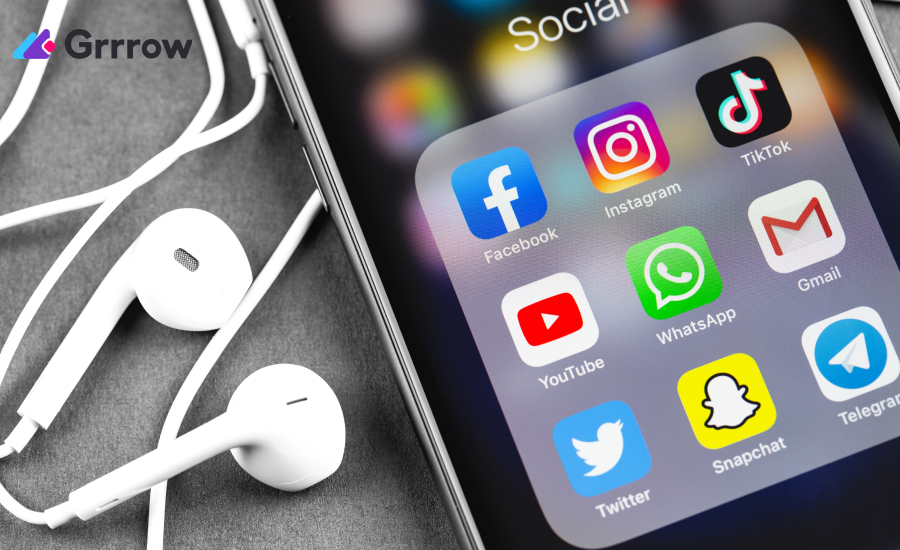In the bustling landscape of the digital age, where information is ubiquitous and attention spans are dwindling, the art of crafting compelling content has never been more crucial. The internet is a vast ocean of data, stories, and ideas, where standing out is both an art and a science. For content creators, this digital era presents a unique set of challenges and opportunities.
The purpose of this article is to demystify the process of content creation in the digital age. We aim to provide you with practical tips and insights that can transform your content writing. From understanding your audience to crafting messages that speak volumes, this guide is designed to equip you with the tools you need to create content that not only engages but also inspires. Whether you’re a seasoned writer or just starting out, these strategies will help you navigate the complexities of content writing and emerge with a clear, compelling voice.
Understanding Your Audience

In the realm of content creation, one of the fundamental steps is identifying your target audience. This process is crucial because it shapes every aspect of your content strategy – from the tone and style to the topics you choose to cover.
Why is this so important? Knowing your audience means understanding their demographics (such as age, gender, location), their interests, and most importantly, their pain points. By comprehending who your audience is, you can create content that speaks directly to them. For instance, the content that resonates with teenagers will differ significantly from what appeals to professionals in their 30s.
Demographics give you a starting point, but diving into interests and pain points is what truly tailors your content. If your audience is small business owners, they might be interested in efficiency, cost-saving strategies, or marketing techniques. Identifying these interests helps in creating content that is not only relevant but also valuable to your audience.
Here are some strategies to tailor your content to meet their needs:
- Use Their Language: Communicate in a way that mirrors how your audience speaks and writes. This creates a sense of familiarity and trust.
- Address Their Questions and Concerns: Create content that solves problems or answers questions that your audience might have.
- Engage in Conversations: Use social media or comment sections to understand what your audience is talking about and what matters to them.
- Feedback Loops: Regularly seek feedback through surveys or direct communication to ensure your content remains relevant and engaging.
Crafting Your Message
In a world overflowing with information, clarity and conciseness are essential. Clear and concise messaging helps your content stand out and ensures that your audience can easily understand and remember your message.
To achieve this, focus on simplifying your language and cutting out unnecessary words or jargon. Each sentence should contribute to your overall message. This doesn’t mean every piece has to be short, but that every element should serve a purpose.
Storytelling and Engagement
Storytelling is a powerful tool in content writing. It transforms standard information into engaging, memorable narratives. When you tell a story, you’re not just sharing information; you’re offering an experience. How does storytelling engage readers?
- Emotional Connection: Stories can evoke emotions, creating a deeper connection with the reader.
- Relatability: Sharing real-life examples or anecdotes makes your content more relatable and less abstract.
- Memory: People remember stories better than plain facts. A well-told story can make your message stick.
Incorporate storytelling by sharing case studies, customer stories, or even your own journey. Remember, the best stories often lie in the simple, everyday experiences – it’s all about how you tell them.
Writing Techniques for Effective Content

Attention-Grabbing Headlines
The headline is your first, and sometimes only, chance to grab a reader’s attention. A compelling headline acts like a gatekeeper, determining whether the rest of your content will be read or ignored. Here are some tips for creating headlines that captivate:
- Be Clear and Direct: Your headline should make a promise or offer that clearly explains the value of your content.
- Use Action Words: Verbs and action-oriented language can make headlines more dynamic and engaging.
- Invoke Curiosity: Pique the reader’s interest without giving everything away. Headlines that provoke curiosity encourage readers to delve into the content.
- Keep It Concise: Long and complicated headlines can be confusing or off-putting. Aim for brevity while maintaining impact.
- Use Numbers and Lists: Headlines with numbers (like “7 Tips for…”) are known to be effective because they set clear expectations for the reader.
Strong Openings
The opening paragraph sets the tone for your entire piece. It’s crucial to start strong to keep your reader engaged. Here are techniques to ensure your opening is effective:
- Start with a Hook: Begin with an intriguing statement, a compelling question, or an interesting fact that draws the reader in.
- Address the Reader’s Need: Quickly demonstrate that your content will address a problem or question that is important to your reader.
- Establish a Connection: Use a relatable tone or a personal anecdote to create a connection with your audience.
- Keep It Focused: Your opening should be directly related to the content that follows. Avoid going off on tangents.
Persuasive Writing
Persuasive writing is key to compelling content. It’s about convincing the reader to take a certain viewpoint or action. Here’s how you can write persuasively:
- Understand Your Audience: Tailor your message to resonate with your audience’s values, needs, and desires.
- Use Emotional Appeal: Connect with your readers on an emotional level to make your message more compelling.
- Provide Evidence: Support your arguments with facts, statistics, and credible sources.
- Highlight Benefits: Clearly articulate the benefits of the viewpoint or action you are advocating.
- Strong Call-to-Action (CTA): End with a clear, concise CTA that tells the reader exactly what to do next.
Optimizing for Search Engines

Search Engine Optimization (SEO) is a crucial aspect of content writing in the digital era. It involves optimizing your content to rank higher in search engine results, thereby increasing visibility and traffic. Understanding SEO basics is essential for any content writer.
SEO matters because it aligns your content with the criteria that search engines use to rank pages. This includes using relevant keywords, creating high-quality content, and ensuring your website is user-friendly. Good SEO practices not only help your content reach a wider audience but also ensure that it reaches the right audience.
Keyword Research and Usage
Keywords are the terms and phrases that people use in search engines. They are central to SEO. Here’s how to effectively use keywords in your content:
- Do Thorough Research: Use tools like Google Keyword Planner or SEMrush to find keywords relevant to your topic. Look for keywords that are popular but not overly competitive.
- Use Keywords Naturally: Your content should flow naturally, even with the inclusion of keywords. Avoid keyword stuffing, which can harm readability and SEO.
- Place Keywords Strategically: Include keywords in your title, headings, and throughout your content, especially in the first 200 words.
- Consider Long-Tail Keywords: These are longer, more specific phrases that can be less competitive and more targeted to your audience’s interests.
- Update Regularly: SEO trends and keyword effectiveness can change, so it’s important to keep your content and keywords up-to-date.
Maintaining Quality and Consistency
Editing and proofreading are critical steps in the content creation process, often making the difference between good and great content. This stage is not just about correcting grammar and spelling errors; it’s a thorough review to enhance clarity, coherence, style, and overall impact of your writing.
Ways to Improve the Editing Process
- Take a Break: After writing, take a break before you begin editing. Approaching your work with fresh eyes can make a significant difference.
- Read Aloud: Reading your content aloud can help catch errors and awkward phrasing that might be missed when reading silently.
- Use Tools: Utilize grammar and spell check tools, but don’t rely solely on them. They can miss nuances that require a human eye.
- Seek Feedback: Having someone else review your work can provide new perspectives and catch errors you might have overlooked.
- Check for Consistency: Ensure that your style, tone, and formatting are consistent throughout the document.
Conclusion
In this comprehensive guide, we have explored various facets of creating compelling content in the digital age. From understanding your audience to crafting engaging messages, the journey of effective content writing is both intricate and rewarding.
We encourage you to take these insights and weave them into your own content creation process. Experiment with different techniques, measure the impact and continually refine your approach. Remember, the world of content writing is ever-evolving, and staying adaptable is key to success. Your journey towards creating compelling content that captivates and converts is just beginning. Embrace it with both creativity and intentionality.







